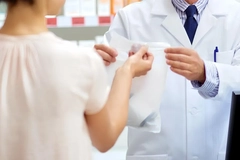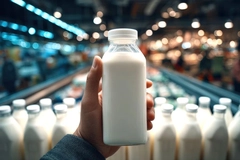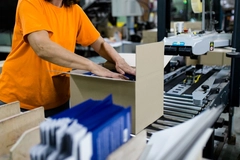COP26: Bio-based materials can bolster climate fight with carbon sinks, says Aalto Uni professor
 Prof. Pirjo Kääriäinen is a 2019 recipient of the Ministry of Education and Culture’s Finland Prize.
Prof. Pirjo Kääriäinen is a 2019 recipient of the Ministry of Education and Culture’s Finland Prize.03 Nov 2021 --- A principal goal of the ongoing UN Climate Change Conference (COP26) is driving up investment in renewables to enable the transition away from fossil fuel-based materials. For the packaging industry, this means reassessing petrochemical plastics’ design, applications and end-of-life disposal.
PackagingInsights speaks with Professor Pirjo Kääriäinen, whose work bridges Aalto University’s School of Arts, Design and Architecture (ARTS) and the School of Chemical Engineering (CHEM) – together CHEMARTS.
CHEMARTS is an interdisciplinary education collaboration exploring innovative production technologies and the efficient use of bio-based sidestreams. These, in turn, can be designed to minimize carbon emissions, Kääriäinen emphasizes.
“Renewable, bio-based material resources can act as carbon sinks when they grow. The reusability and recyclability of packaging materials play an important role in decreasing packaging carbon footprints. For example, cellulose, the most abundant organic polymer on earth, can be recycled several times.”
“When used for high added-value products with a long lifespan, such as durable and recyclable products, wood building or high-quality textiles, [bio-based materials] help to reduce CO2 emissions as carbon stays in the materials.”
Questions for material developers
Kääriäinen says there is a fine line between the “amazing possibilities but also ethical dilemmas” of synthetic biology.
Students tinker with bio-based materials in the CHEMARTS lab.“We need to find ways to reduce our overconsumption [of natural materials]. It’s crazy how we use these materials. We use them and we throw them away. We waste those precious raw materials all the time. So we need circularity, of course. But we also need to tackle the key problem, which is overconsumption.”
When innovating new materials, Kääriäinen asserts all possible implications should be considered. “Should we create things because we can, or should we be aware of the possible impacts all the time, and make conscious decisions on how to proceed, or not to proceed?”
“For example, plastics were supposed to solve many problems of our everyday life. Of course, that promise was kept in many cases. But the plastic-related environmental problems we face today could not be imagined in the 1950s and 60s.”
Answering her own question, Kääriäinen stresses “we need to definitely be very well aware,” highlighting discussions on packaging material development should not just pertain to the scientific community but include industry, designers and politicians as well.
The role of synthetic biology is particularly salient, as the research field could play a leading part in solving famine, environmental pollution and diminishing natural resources. “Ethical considerations and open discussion need to be continuous,” she adds.
Dipping grocery store produce in the DipWrap aqueous solution protects from the elements. The peelable, biodegradable film consists of agar, cellulose nanocrystal, and carnauba wax.Hopes for the future?
The two Aalto University schools also research new ways to harness wood and cellulose. Some of their leading projects involve a plastic shrink wrap alternative called DipWrap for protecting grocery store produce, and an edible wood-based foam called FoamWood for replacing plastic packaging.
“From a sustainability point of view, the use of renewable resources and efficient circulation of all materials are crucial topics,” says Kääriäinen.
“Some plastics, such as polylactic acid (PLA), are already produced from bio-based, renewable materials. Hopefully, in the future, more agricultural and industrial sidestreams can be used efficiently to also produce plastic-like, recyclable materials.”
Overall, Kääriäinen also sees high potential for the commercialization of its new micro- and nanofibrillar cellulose materials for packaging and new types of natural colors and finishes to transform polluting textile finishing processes.
Also, Aalto University’s Flower Matter processes waste flowers into bio-based materials that can be used in place of paper, leather, or packing foam.
Cost considerations
Arguably, the shift toward a circular economy is suffering delays due to the higher costs incurred by more environmentally sustainable materials.
“This [cost issue] is also challenging to answer,” Kääriäinen concedes. “When new materials are developed, it is often impossible to estimate the costs in a longer perspective, before the production processes are scaled up and fine-tuned.”
Here, the Aalto University professor pinpoints increased automatization and AI as potential solutions for more efficient production processes. The solutions include fully maximizing the use of waste to minimize raw material costs.
“In the future, we might not afford to have cheap materials anymore, which means the whole system must change,” says Kääriäinen.The Ioncell process could revolutionize the recycling of textile waste, repurposing used cotton as high-quality luxury fibers (Credit: Eeva Suorlahti).
“Products need to be designed for longer use, repairable and recyclable. This might sound idealistic, but somehow we need to relearn to use less, even in rich countries.”
Enabling future generations
CHEMARTS allows students to explore replacing fossil fuel-based materials with bio-based alternatives. Although Kääriäinen advocates a shift toward tighter consumption and more reusability, one could argue her research hub explores replacing one single-use material for another.
“[CHEMARTS] is mainly involved in educational activities. We are really trying to inspire young people to get involved with materials. Most people don’t know where materials come from and where they go,” she explains.
“We let them very freely work with whatever related supplier base material comes to their mind and allow them to do something to replace [materials] or do something completely new.”
CHEMARTS’s student projects are just “one part of the story,” Kääriäinen continues. Furthermore, she is involved with the Ioncell project, a technology converting used textiles, pulp, or even old newspapers into new, recyclable textile fibers sustainably and without harmful chemicals.
“Consumption is at an unbearable level now and that’s why we need to find ways to tackle those behaviors and our mindset.”
By Anni Schleicher











